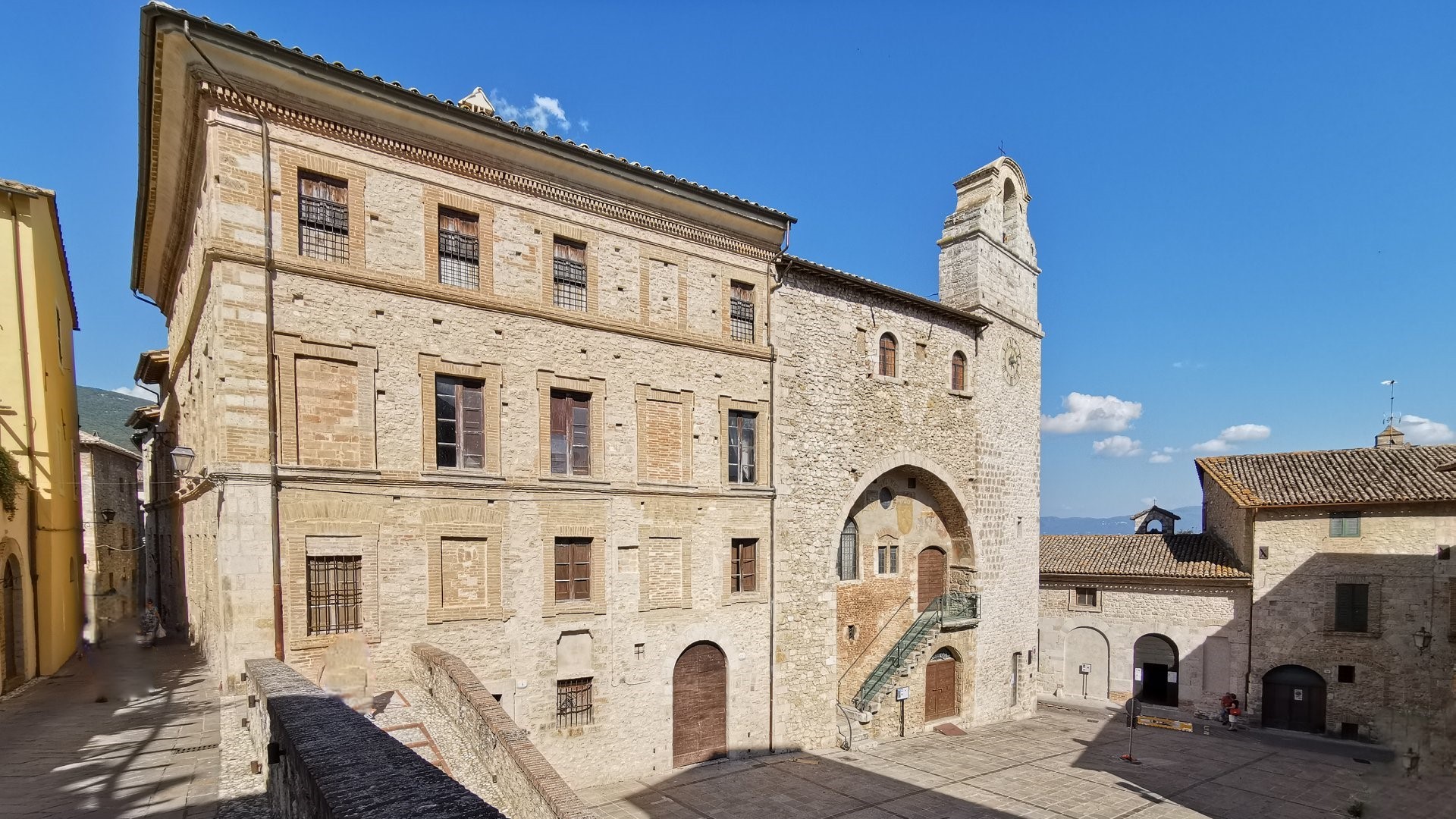
XII-XIII century About halfway along via Casventino, Palazzo Vecchio or Palazzo del Capitano del Popolo or Palazzo Pretorio suddenly emerges in all its grandeur, which is the symbol of the free municipality of San Gemini. Seat for many centuries of the city government presided over by the Podestà and symbol of civic power, the palace is an interesting example of Gothic architecture, rich in pictorial evidence. The facade with a large round arch and the original stone staircase that leads to the first floor houses the coats of arms of Eugene IV and the Orsini family. Two rooms inside: on the right-hand wall of the first large room, the pictorial cycle of the "Rural work" depicting the pressing of the grapes, the harvest, the collection of the ficus nigra, on the left-hand wall still coats of arms of the Podestà including that by Giovanni da Montenegro from 1482. On the left the eighteenth-century Palazzo Zanassi and on the right the fourteenth-century Torre Esperia used as a prison, crowned by a bell gable which still today preserves the original bell for meetings forged in 1318 by Mastro Matteo da Orvieto which was used to announce the meetings of the City Council but also to warn the population of any dangers. Particular attention deserves the Roman quadrant clock of 1700 installed by the Princes of Santa Croce.